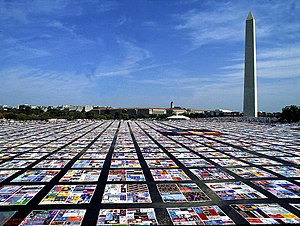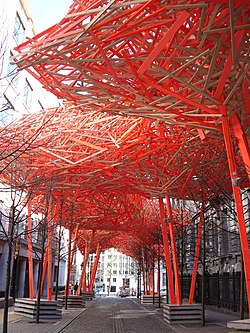The artistic process/Art as social activity
| Art Appreciation and Techniques (#ART100) | |
|---|---|
| The artistic process | Overview | Introduction | The individual artist | Becoming an artist | Art as social activity |
Some of the grandest works of art are made not by a single person but by many people. Pyramids in Egypt and Mexico are massive structures, built by hundreds of laborers under the direction of designers and engineers. Egyptian pyramids are tombs for individual royalty, while those in Mexico function as spiritual altars dedicated to gods or celestial objects. They are typically placed at a prominent site and give definition to the surrounding landscape. Their construction is the cumulative effort of many people, and they become spectacular works of art without the signature of a single artist.
After the selection process the artist will commence on an intense collaboration with architects, engineers, public administrators and others connected with the project, ultimately resulting in the installation of a public artwork. Because of its complexity this process needs to be expertly managed. Other countries have similar programs. All of them allow individual artists and collaborative teams the chance to put a definitive creative stamp on public spaces.
Public art projects can be subject to controversy. It's not easy for everyone to agree on what constitutes "good" or "bad" art, or at least what is appropriate for a public space. The issue takes on a more complex perspective when public money is involved in its funding.
Time, money, a space to work in, a supportive family and public, a culture that respects skill and values creativity and expression: all of these are required for the artist to thrive. What does an artist give back to society? They give voice to speak of those things that language cannot describe, and an experience that pays attention to aesthetics and an interest in the world. They give expression to what it is to be human in all its positive and negative forms. A wonderful example of this is provided in the photography of Don Tremain. His "Salty Dogs" series of black and white images featuring country musicians quietly speaks to the power of music and the aesthetic image in art and their connection to community, place and the singular creative act.

